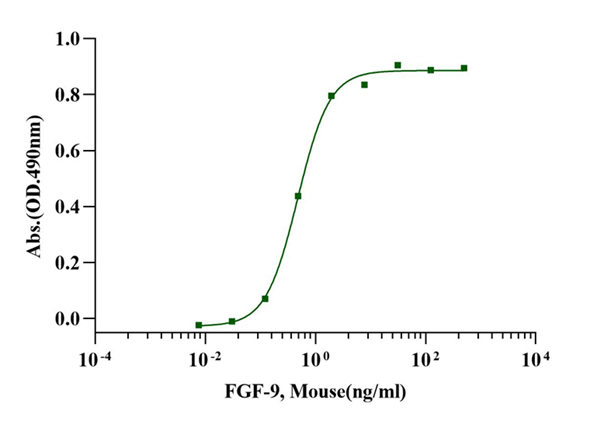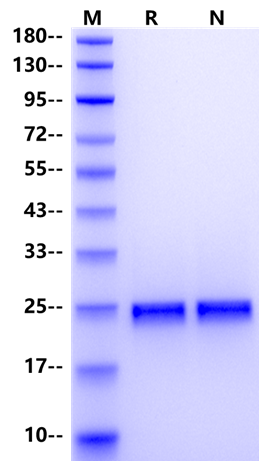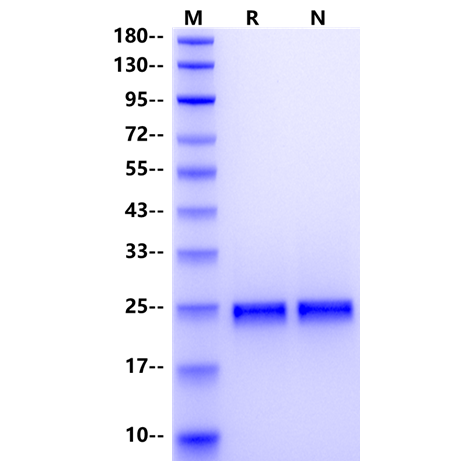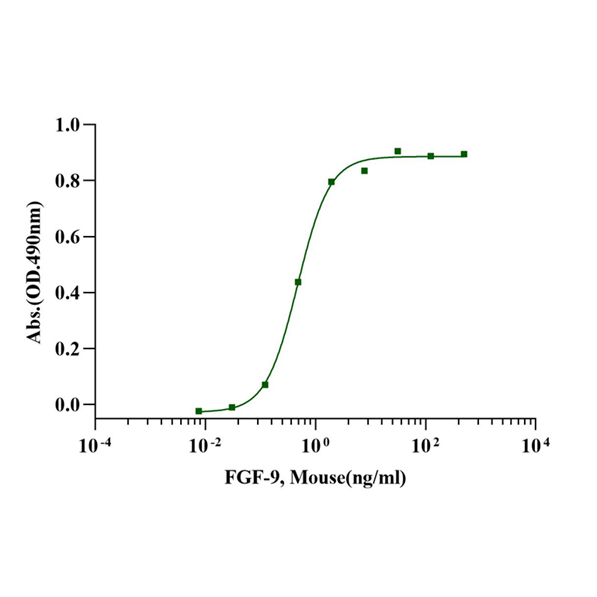Product Details
Product Details
Product Specification
| Species | Mouse |
| Antigen | FGF-9 |
| Synonyms | FGF9, GAF, HBFG-9, MGC119914, MGC119915, SYNS3 |
| Accession | P54130 |
| Amino Acid Sequence | Met1-Ser208 |
| Expression System | E.coli |
| Molecular Weight | 22-25kDa (Reducing) |
| Purity | >95% by SDS-PAGE |
| Endotoxin | <0.1EU/μg |
| Conjugation | Unconjugated |
| Tag | No Tag |
| Physical Appearance | Lyophilized Powder |
| Storage Buffer | 20mM Tris, 500mM NaCl, pH8.0 |
| Reconstitution | Reconstitute at 0.1-1 mg/ml according to the size in ultrapure water after rapid centrifugation. |
| Stability & Storage | · 12 months from date of receipt, lyophilized powder stored at -20 to -80℃. · 3 months, -20 to -80℃ under sterile conditions after reconstitution. · 1 week, 2 to 8℃ under sterile conditions after reconstitution. · Please avoid repeated freeze-thaw cycles. |
| Reference |
2,Garcès A. et al. (2000) FGF9: a motoneuron survival factor expressed bymedial thoracic and sacral motoneurons. J Neurosci Res. 60(1): 1-9. |
Background
FGF9(fibroblast growth factor 9, FGF9) is one of the fibroblast growth factor (FGF) family members. It is widely distributed in various tissues of human body and involved in bone development, angiogenesis, embryonic development, damage repair, cell apoptosis, nerve regeneration, tumor growth and other physiological and pathological processes, and can effectively promote mitosis and cell growth. Current evidence suggests that FGF9 may play a prominent role not only in bone development and growth of cartilage into bone formation and generation, but also has a significant impact on aspects of ovarian cancer, nerve regeneration, gonadal differentiation, there remains much to be discovered and investigated on the functions and mechanisms of FGF18.
Picture
Picture
Bioactivity

SDS-PAGE





